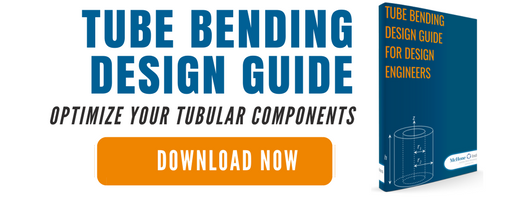
Aluminum tubing is one of the most popular metal fabrication materials for industrial uses.
For starters, it’s affordable. But there’s more you should know about this metal -- good and bad -- before you make it the star of your project.
Related: 4 Realistic Ways to Cut Aluminum Tubing Costs
Aluminum Tubing Specs
In general, tubing is measured by outside diameter (OD) and exact wall thickness measurements. Tubing uses are more structural, while piping is used for fluid transportation.
Aluminum tubing is nonferrous, which means it doesn’t include iron. It’s produced on a spectrum of alloys. All of its alloys have different chemical and physical properties, so you'll need to match an aluminum grade to your application.
Need help? Try our quick tube sizing guide:

Aluminum also has an energy-intensive production process, one of the few cost factors not in its favor.
(Fun Fact: Aluminum makes up about 8% of the Earth's crust.)
Aluminum Tubing Feel
Aluminum is remarkably lightweight, which also affects its cost versus, say, stainless steel tubing. How light? Aluminum is one-third the weight of steel. It’s also not as dense -- about 2.5 times less. This affects how aluminum should be used -- lighter metals are general weaker. However, sometimes -- think consumer goods that buyers don't want to break their backs lugging around -- a lightweight product is preferable.
Aluminum is highly conductive, which can be a good or bad thing depending on how you plan to use it. The 1000 series of alloys are the most conductive.
Aluminum Tubing Workability
The good news is that aluminum is more malleable and elastic than steel. Sometimes being soft is a good thing -- sometimes you need a lot of bends or other complex shapes without having to worry about structural integrity.
Engineers classify aluminum by heat treatability and temper. Check out this chart for aluminum tube data, including tensile strength, yield strength, and more.
Where does aluminum falter here? It's not as easy to weld as stainless steel, plus the welds are less consistent.
To make matters worse, the end product is less durable than steel against:
- Shock
- Stress
- Impact
- Other pressures
Aluminum corrodes much faster -- even with a nice finish -- and isn’t built for high-stress situations. Annealing can help strengthen the metal, but make sure your softening efforts turn into a melting mess.
The Look
Aluminum’s got something many steels and other materials don’t: an attractive natural finish. It’s innately shinier than most other metals.
Best of all, while aluminum can corrode, it doesn’t rust. (Confused? Rust is only one type of corrosion.) Since it doesn't contain iron, it can stay pretty longer.
It’s also notable that since aluminum’s naturally attractive, you’re less likely to need to painting or coating -- finishes that often wear off or get scratched away.
Don’t Be a Boob, Get the Right Tube
If your project does not have intense physical or structural demands, than almost any aluminum type will be sufficient.
The right grade for your project can be an intimidating choice. If you’re really stuck, you may need to enlist a manufacturing expert who can guide you smoothly through the design and bending processes.


